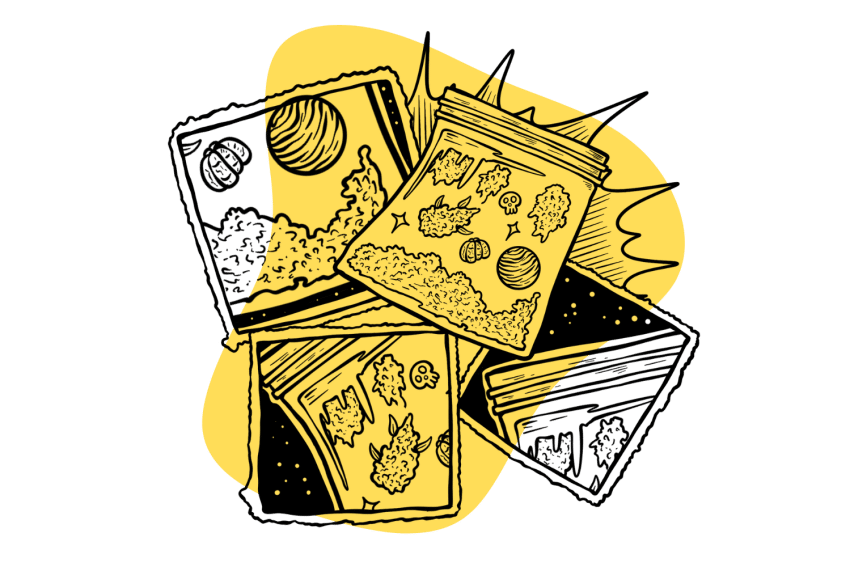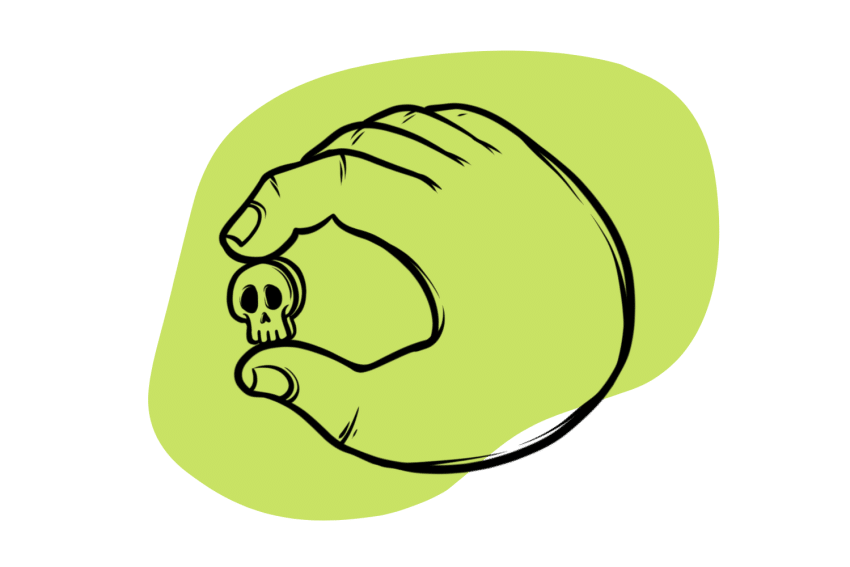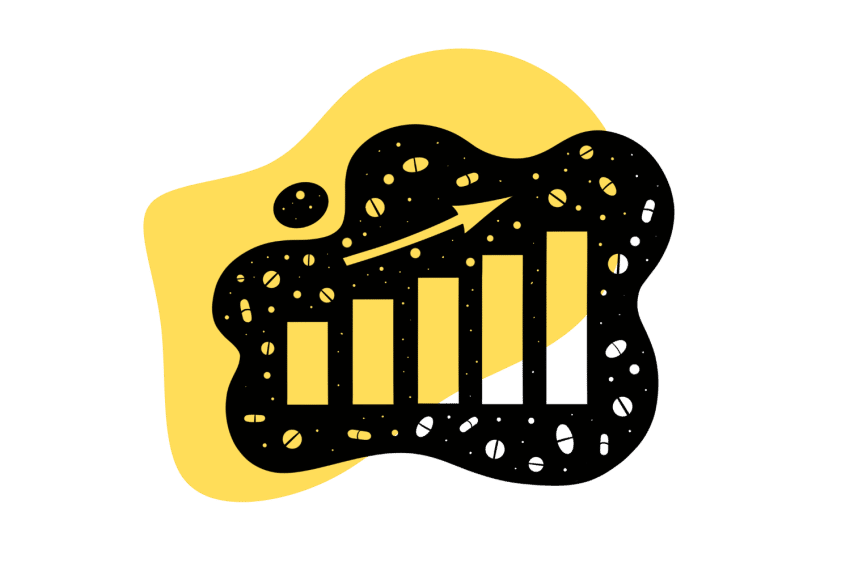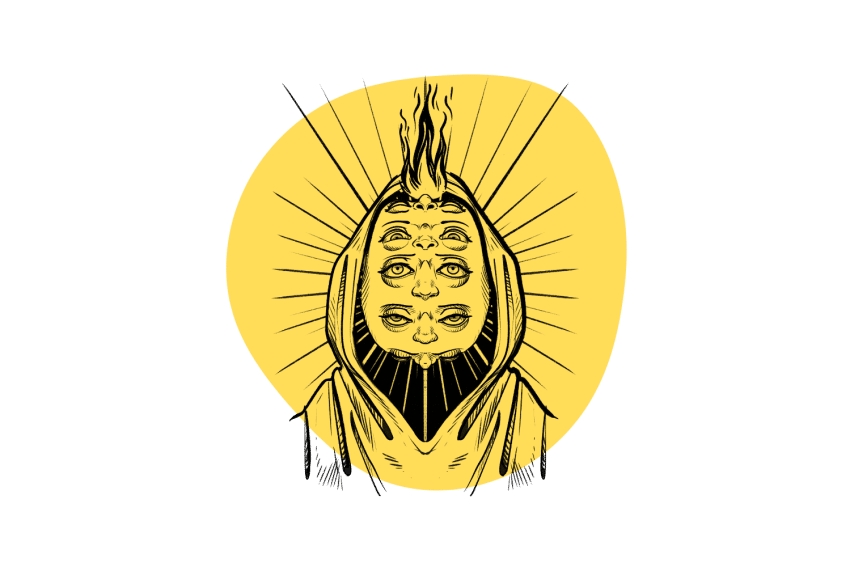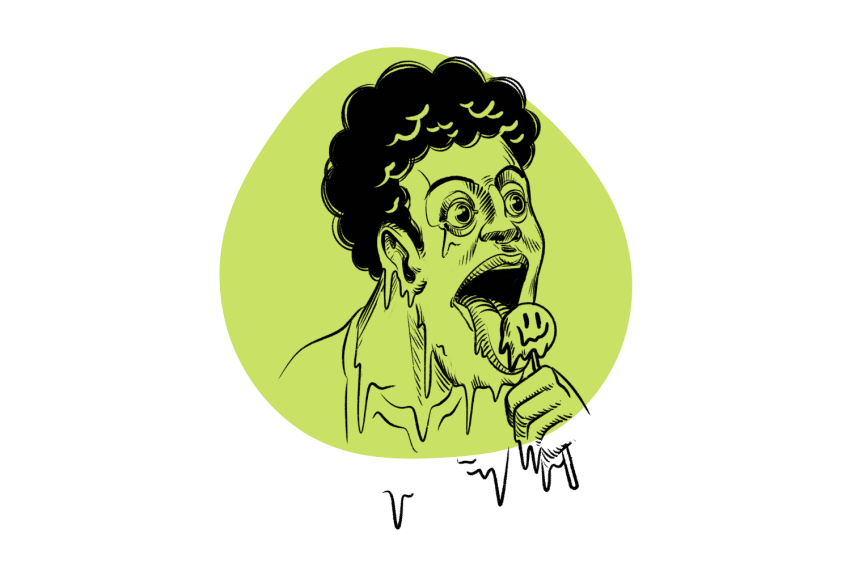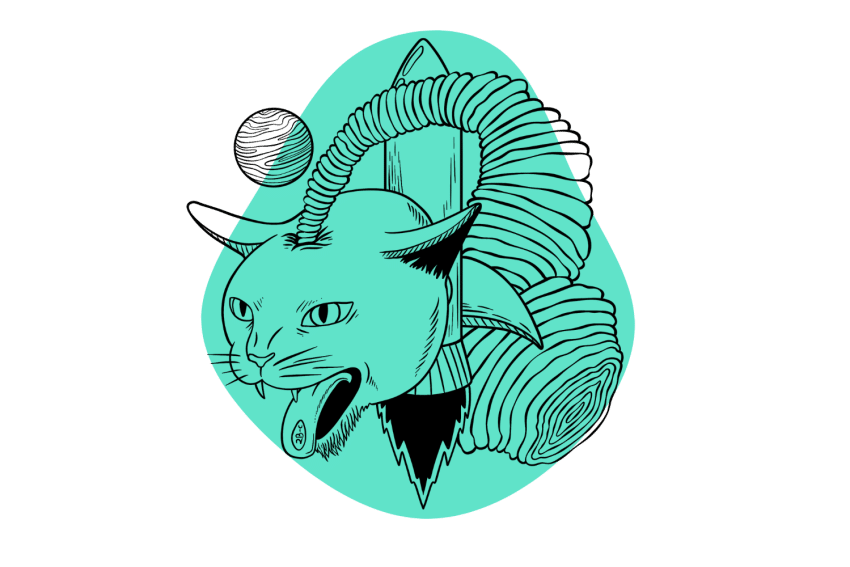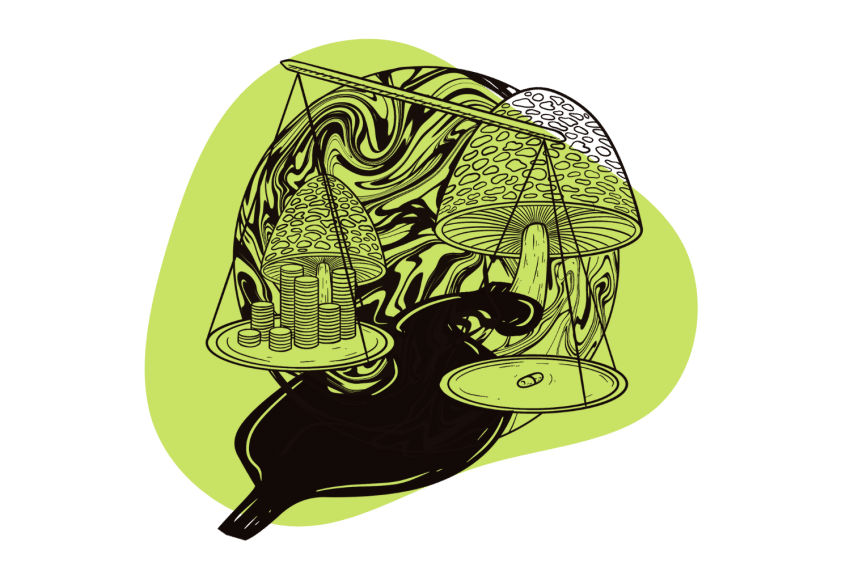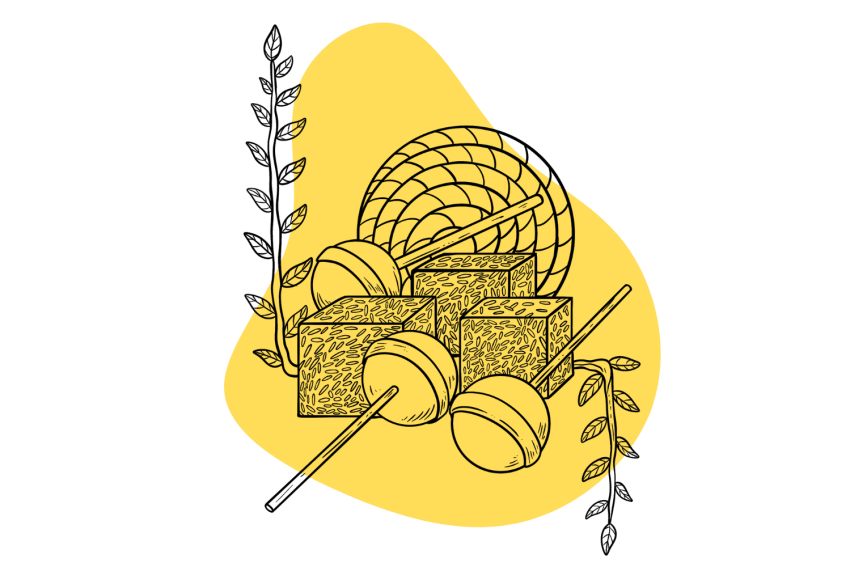MDMA for HSDD? Here’s How It Could Help
Embarrassment often keeps women from mentioning sexual problems, and stereotypes make it hard to recognize when there is one.
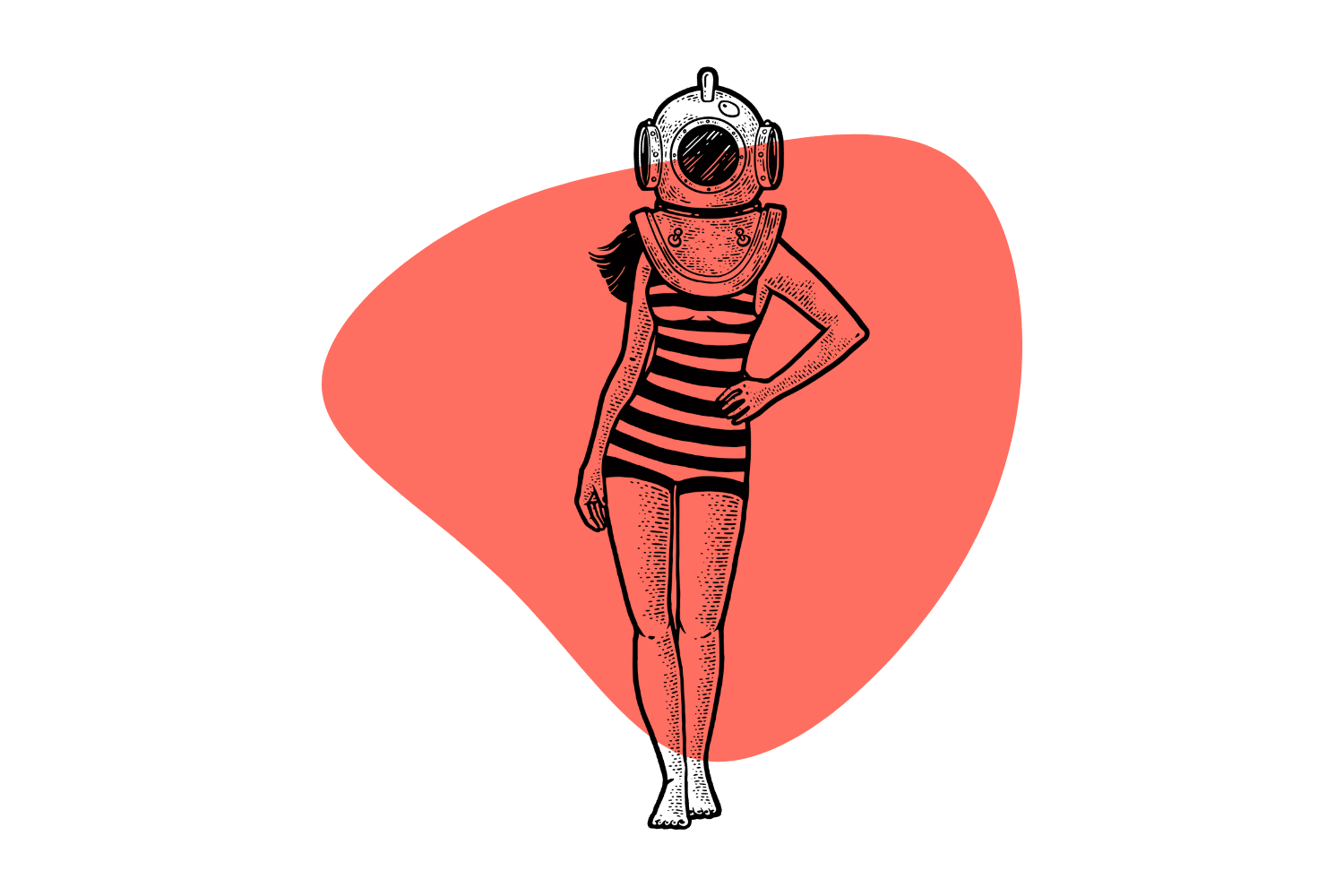
HSDD affects at least 10% of all women, with some studies saying up to 22% experience it continuously.
Unfortunately, HSDD is hard to diagnose, partly due to how subjective the symptoms are. One key sign is that the lack of sexual desire causes distress — but what’s problematic for one person may be fine for another.
Another issue is that many women think low desire is normal (or even ideal) — especially as they age — and some cultures almost glorify stifled sexuality. We end up with women that don’t want to talk about their lack of desire and see no reason to.
What is HSDD?
In a nutshell, hypoactive sexual desire disorder (HSDD) is a lack of sexual desire lasting more than six months.
But it’s more than just a lack of desire. HSDD is only diagnosed if the lack of libido is causing distress to the individual. Other medical issues also need to be ruled out before an HSDD diagnosis is made [1].
It’s completely possible for a person to have no desire but not have HSDD; it has to really bother the individual, and not just because it upsets their partner. It’s common to feel frustration, shame, unfeminine, incompetence, sadness, and a sense of loss.
Both men and women can have it, but it’s more common in women, especially those that are pre and post-menopausal.
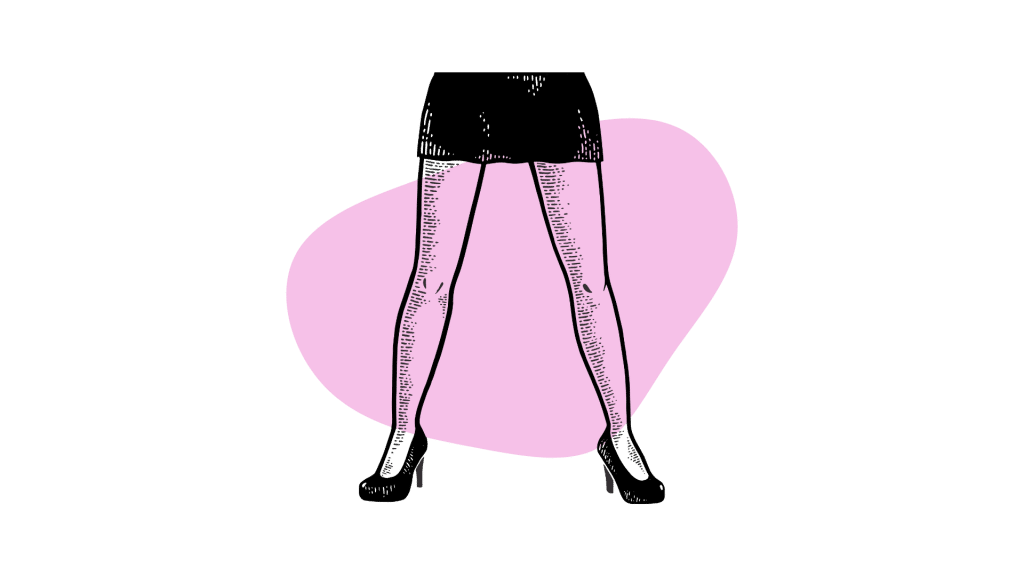
Unfortunately, this is also the time of life when women expect to lose their desire and therefore are unlikely to consider it an actual problem. They accept it as a fact of life, though it doesn’t have to be this way.
Almost half of all women will have HSDD at some point, so it’s good to understand what it is, what causes it, and what can be done about it.
Is HSDD Really an Issue?
By definition, yes. The woman’s perspective literally dictates whether she has HSDD or not.
But what does that mean? Can low libido be that devastating?
Women that have trouble with desire, arousal, or sexual pain tend to be less satisfied with their partners and less happy overall. For example, a study of postmenopausal women with low desire showed they also had lower quality of life — physically, socially, mentally, emotionally, and in overall health and vitality [21].
What Causes HSDD?
Many diseases, mental health issues, and medications can cause low libido, but in order to be diagnosed with HSDD, there can’t be any other obvious cause besides other sexual disorders.
There are theories about the reason behind HSDD, but we don’t know much about how human desire works. Fortunately, HSDD can be easy enough to treat despite this lack of knowledge.
Excitatory & Inhibitory Activity
Sexual desire is at least partly controlled by inhibitory and excitatory factors. Serotonin, prolactin, and opioids play a role in the former, and dopamine, estrogen, progesterone, and testosterone in the latter [2].
Decreased excitatory activity, increased inhibitory activity, or both could be the reason for an exaggerated lack of desire.
Adaptive Response
Inhibited sexual response could also be the body’s way of protecting the person from a risky or threatening situation; it can be a response to stress and fatigue, relationship problems, learned behaviors, cultural influences, and past trauma [3].
Culture & Race
It might seem odd, but a study in 2007 on premenopausal women in France, Italy, Germany, and the United Kingdom showed a connection between nationality and desire. Those in France and Italy reported fewer instances of low sexual desire, causing the authors to conclude that these differences were due to cultural, regional, and religious factors [4]. This coincides with other studies that show ethnicity and culture play a role in sexuality [5, 6].
Other Sexual Problems
Female Sexual Dysfunction (FSD) takes on various forms, and many of these stem from the lack of desire or are the cause of it.
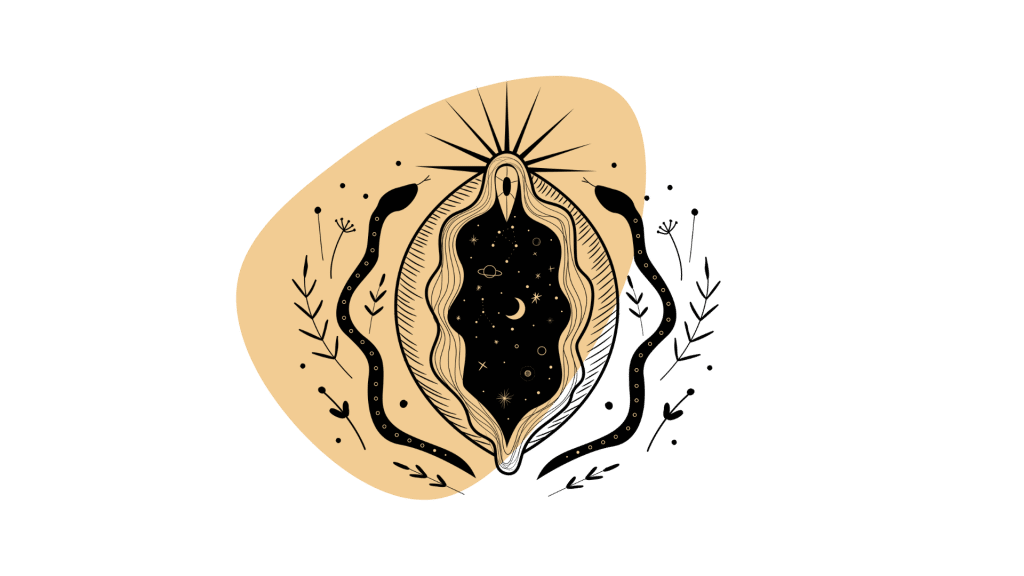
Research shows that 40% of women with HSDD also have another FSD — usually arousal or orgasmic disorders [7]. This can trigger a cause-and-effect reaction — chronically unfulfilling or painful sex makes future arousal more difficult — causing a cycle that’s hard to break.
What is MDMA & Can it Really Help HSDD?
MDMA (3,4-Methylenedioxymethamphetamine) is called ecstasy for a reason. This popular party drug is known for its ability to cause people to feel connected, and not just emotionally.
Because of how MDMA works, it could help HSDD in three ways. These all tie together, but we’ll look at them separately.
Euphoria & Tactile Stimulation
Sex on MDMA tends to be positive; it’s an empathogen, a stimulant, enhances the senses, and creates intense feelings of euphoria — all good things when you’re trying to get in the mood.
MDMA causes sights, sounds, and touch to become more intense, stress and inhibitions are reduced, and you feel a deeper connection to those around you. It’s classified as an amphetamine, which means it’s stimulating in nature. This energy, combined with the electrifying touch and openness, could be enough to help women move past any physical or mental things that are causing low libido.
This isn’t just anecdotal, either. MDMA affects serotonin levels, not only causing a sudden increase but also slowing its reabsorption. It also releases oxytocin and vasopressin.
MDMA increased desire in more than 90% of study participants. The orgasm was delayed but more intense, and there was a greater sense of sexual satisfaction [8]. One problem — it can also impair erection, but we’re talking about women right now, not men.
Confidence & Self Consciousness
The euphoria from ecstasy causes a person to relax, be more social, and lowers inhibitions; it’s easier to read people’s emotions and makes you feel more extroverted and less likely to feel social rejection [9].
If fear of letting go or self-consciousness is an issue, MDMA can help reduce or remove those barriers.
Breaking Down Barriers In Therapy
MDMA is currently a Schedule I drug in the US, but there’s a big push for it to be used in psychotherapy. The FDA is looking at approving it for PTSD; however, it could be useful for many other disorders, such as attachment insecurities, depression, anxiety, obsessive-compulsive disorder, suicidality, substance abuse, and eating disorders [10].
Using MDMA therapeutically isn’t new. Back in the 70s and 80s, it was used extensively for these purposes until it became popular for recreational use. Then, the government stepped in to save us from ourselves, and now we have to work through decades of red tape to make minimal progress.
Regardless, psychedelic-assisted psychotherapy is becoming a new form of treatment as research shows how highly effective and safe some psychedelics —like shrooms, ketamine, and MDMA — really are.
How can it help HSDD? MDMA can help a couple open up and work towards resolving their problems that might be affecting the woman’s desire. As previously mentioned, a lot of things could cause a woman to withdraw and lose interest in sex, even if she isn’t aware of them.
A recent study showed positive results for couples receiving treatment with two sessions with MDMA along with Cognitive Behavioral Conjoined Therapy (CBCT). In each couple, one partner had PTSD. Both partners reported improvement in PTSD and better intimacy and relational support. All improvements were the same six months later at the follow-up [11]. Though this study was small and involved PTSD, it’s easy to see how well it could work for other couples.
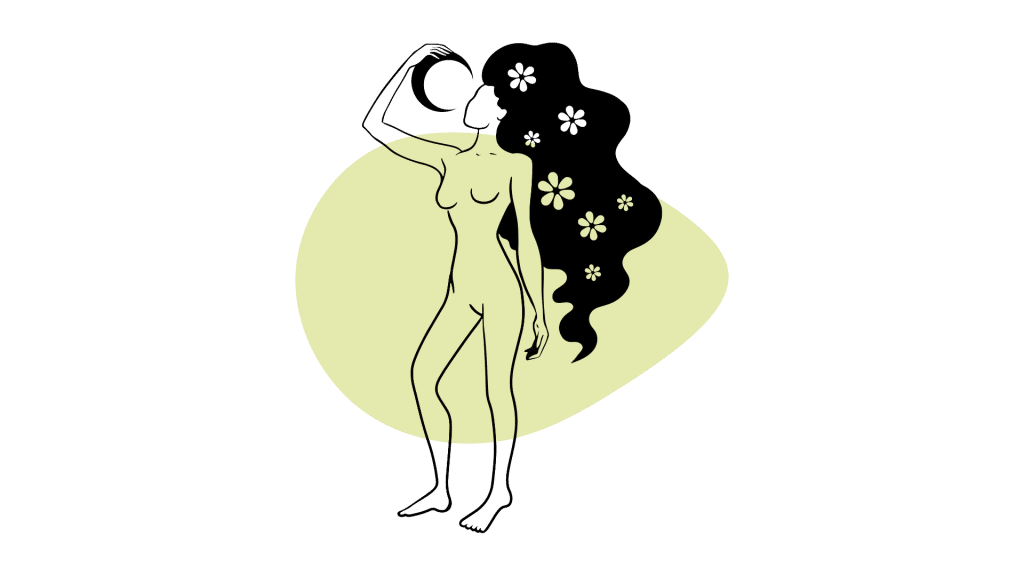
It can help on an individual level, too. Psychedelics help a person look inward, and therapy with integration can work wonders for those struggling with some of the same problems — like depression and trauma — that can worsen HSDD.
Related: Exploring the Shadow & Psychedelics
Is MDMA Safe? What Are The Side Effects?
MDMA is safer than we’ve been led to believe, but that’s only with responsible use: take the right amount, test it, know the local laws, and be in a safe place with people you trust.
That said, here are the dangers of taking MDMA.
- Anxiety
- Clenched jaw
- Dehydration
- Dizziness
- Dry mouth/excessive thirst
- Excessive sweating
- Heart attack
- Heart palpitations
- Heatstroke
- Impaired judgment
- Increased heart rate
- Muscle weakness
- Nausea
- Rapid eye movements
- Seizures
- Serotonin syndrome
- Stroke
- Tension
- Tingling sensations
- Vomiting
Coming down from MDMA tends to cause depression and lethargy.
Repeated or heavy use can cause long-term neuropsychopharmacological damage, reduced levels of 5-HT and 5-HIAA, deficits in learning and memory, sleep and appetite problems, and, ironically, a loss of sexual interest and pleasure. Heavy users show a serotonergic axonal loss in the frontal lobes, temporal lobes, and hippocampus [12].
MDMA & Women’s Health
Women need to be careful when finding the right dose of MDMA — microdosing might be the best place to start.
A study showed that MDMA had a greater impact on women than men when given equal amounts per kilogram of body weight. Women were more susceptible to its 5-HT-releasing effects, hallucinations, thought disturbances, and side effects and felt stronger psychoactive effects [13].
MDMA & Sex: Impairment & Other Problems
MDMA is hardly a cure-all for sex issues. Can it help? It sure seems that way, but it can also bring about other problems. A study on MDMA and sexual function revealed there are a few things to consider before opening that door [14].
- Inhibition might cause you to do things you wouldn’t normally agree with.
- MDMA might increase sensuality but not increase desire.
- You might deal with other issues, such as problems with orgasm or lack of lubrication.
- It’s not legal in most places, making it risky.
In the study, individuals were not just open to affairs and multiple partners (including same-sex), but many acted on it. Maybe you have no problems with this, but it’s something to keep in mind since it can lead to other issues (jealousy, pregnancy, STDs, etc.).
Many people also said it didn’t increase their desire; it did make them feel sensual and connected, which might be enough in some cases.
Legality is another roadblock — probably the biggest. Even if you’re not afraid of the legal consequences, it’s hard finding MDMA that’s not cut with other, more dangerous substances.
Related: The Impact of Psychedelic Shrooms on Sex.
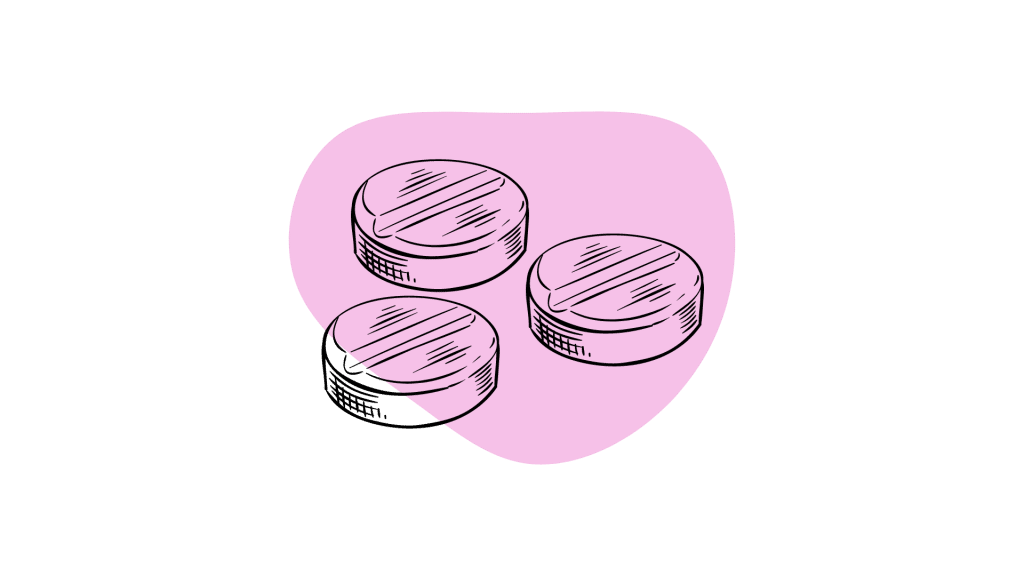
Current Treatments for HSDD
Whether it’s HSDD or something else causing the lack of desire, there are many options available for treatment.
Finding the Cause of HSDD (& Contributing Factors)
As with anything, the first step is finding the cause. Next, locate anything that could exasperate the problem.
The following can hinder a person’s sex drive, making HSDD more likely and more severe [7]. Reducing, removing, or fixing these things can make treatment more successful. Sometimes simply acknowledging these can help improve a person’s outlook, a reminder that there is a legitimate reason sex doesn’t sound good, and it’s ok.
- Antidepressants: These are a common factor for those with HSDD and low libido. Sometimes tweaking the dose can bring levels back to normal [15]. Women will need to work closely with their doctors to make adjustments and watch for other issues that could pop up.
- Partner’s sexual problems: ‘What’s yours is mine’ takes on a whole new meaning. Premature or delayed ejaculation and erectile dysfunction can cause frustrations that result in a reduced desire for the woman.
- Hormones or age: Like it or not, it’s an issue. Menopause decreases sex hormones, along with other fun things that make sex a no-go, such as vulvovaginal atrophy, vaginal dryness, and dyspareunia (painful intercourse).
- Other medications: Antipsychotics, cardiovascular and antihypertensive medications, amphetamines, hormone contraceptives, chemotherapeutic agents, and other narcotics can significantly impact a person’s drive [4].
- Chronic health problems or ongoing treatments: It makes sense; you won’t be in the mood if you feel horrible all the time. Add stress and exhaustion into the picture, and sex becomes another chore on the “to-do” list.
What’s next? What treatments are available for HSDD?
Cognitive Behavioral Therapy (CBT)
CBT is quite effective in treating many psychological disorders, including depression, anxiety, addiction, marital problems, and eating disorders, but it’s also used for HSDD [16]. In fact, it’s often better than medications and other types of treatments [17].
This type of therapy focuses on changing thought patterns and behavioral and emotional responses, in essence, stopping the negative feedback loops that take hold. By recognizing biased, self-defeating thoughts and problematic behavior, the patient can work towards making positive changes. Traditional CBT focuses on the past, present, and future, while some newer variations implement mindfulness techniques and only focus on the current and future.
Gut Microbiome Balance
It’s no secret that gut health plays a large role in overall health — but sex drive? It might be a thing. A new study revealed a huge difference in gut microbes between women with HSDD and those without. The women with HSDD had significantly altered metabolic signatures, decreased levels of Ruminococcaceae, and increased levels of Bifidobacterium and Lactobacillus.
The high amounts of Bifidobacterium and Lactobacillus, along with other fecal metabolites, correlated negatively with the sexual desire score, while Ruminococcaceae correlated positively. This means that altering gut microbes could be one avenue of treatment [18].
Medications For HSDD
Some drugs can help treat HSDD, depending on underlying issues that need to be addressed.
Due to the likely involvement of excitatory and inhibitory actions in sex drive, medications affecting serotonergic, melatonergic, and dopaminergic pathways are all valid options when it comes to HSDD. Stimulating dopamine or blunting endocannabinoid or serotonin release can help stimulate sexual desire [19].
Flibanserin is the only FDA-approved medication for HSDD in pre-menopausal women. It’s a non-hormonal, 5-HT1A receptor agonist and 5-HT2A receptor antagonist that decreases serotonin activity and increases dopamine and norepinephrine activity.
Buproprion, an antidepressant, is sometimes used for HSDD and other sexual dysfunctions, though it is not approved for this use yet.
It’s possible that simply addressing physical discomfort during sex can help HSDD, like a good lube for dryness. Because poor genital blood flow can also be a hindrance, women can take drugs aimed to increase it [20].
Hormone Therapy
Low levels of estrogen cause mucosal changes and dyspareunia. Ovarian hormones can affect the regulation of serotonin reuptake transporters; a reduction in these hormones can cause a lower level of endorphins.
Androgen replacement therapy can increase spontaneous desire and arousal, and testosterone can help menopausal women, though again, these are not approved by the FDA [20].
Honest Relationships
Ultimately, if the relationship is broken, little else will help. Emotional intimacy plays a large part in a woman’s desire, so it’s important to address any problems. Often, this goes hand-in-hand with other treatments, everything working together to fix this multi-faceted issue.
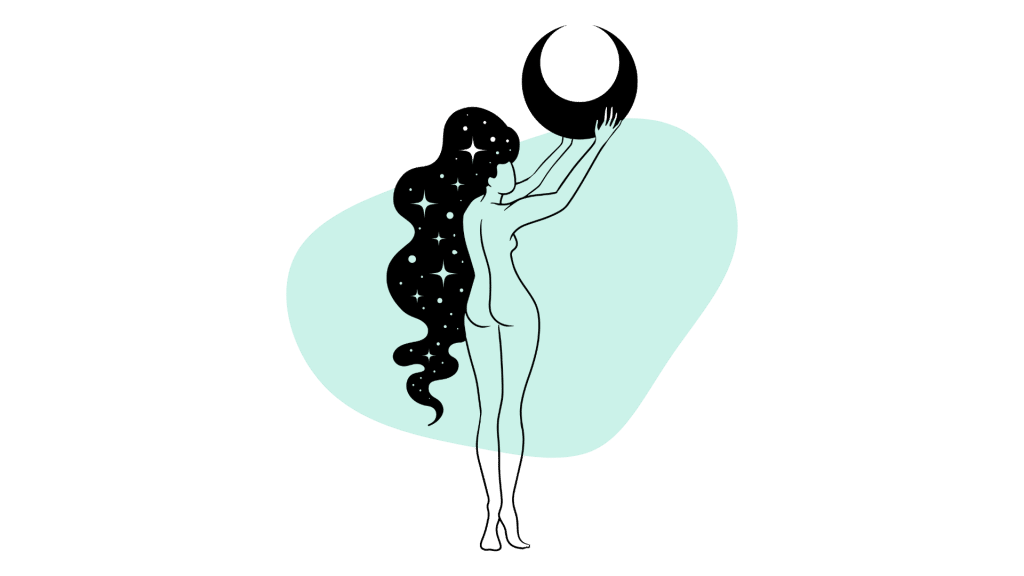
Conclusion: Can MDMA Help Women With HSDD?
MDMA has the ability to help treat many disorders, and HSDD could be one of them. Its knack for increasing sociability, sensations, and emotional connections while lowering inhibitions could pair well with other forms of treatment.
Fortunately, HSDD is treatable even without MDMA — you just have to find the source, along with other factors that might contribute to a lack of desire. Trauma, troubled relationships, culture, hormones, health problems, and medications can all come into play.
Of course, this only happens when there’s a willingness to admit there’s a problem and then open up about it.
References
- Pettigrew, J. A., & Novick, A. M. (2021). Hypoactive Sexual Desire Disorder in Women: Physiology, Assessment, Diagnosis, and Treatment. Journal of midwifery & women’s health, 66(6), 740-748.
- Clayton, A. H. (2010). The pathophysiology of hypoactive sexual desire disorder in women. International Journal of Gynecology & Obstetrics, 110(1), 7-11.
- Ewers, K. (2014). An integrative medicine approach to the treatment of HSDD: introducing the HURT Model™. Sexual and Relationship Therapy, 29(1), 42-55.
- Graziottin, A. (2007). Prevalence and evaluation of sexual health problems—HSDD in Europe. The journal of sexual medicine, 4, 211-219.
- Quadagno, D., Sly, D. F., Harrison, D. F., Eberstein, I. W., & Soler, H. R. (1998). Ethnic differences in sexual decisions and sexual behavior. Archives of Sexual Behavior, 27(1), 57-75.
- Cain, V. S., Johannes, C. B., Avis, N. E., Mohr, B., Schocken, M., Skurnick, J., & Ory, M. (2003). Sexual functioning and practices in a multi‐ethnic study of midlife women: Baseline results from SWAN. Journal of sex research, 40(3), 266-276.
- Segraves, K. B., & Segraves, R. T. (1991). Hypoactive sexual desire disorder: Prevalence and comorbidity in 906 subjects. Journal of Sex & Marital Therapy, 17(1), 55-58.
- Zemishlany, Z., Aizenberg, D., & Weizman, A. (2001). Subjective effects of MDMA (‘Ecstasy’) on human sexual function. European Psychiatry, 16(2), 127-130.
- De la Torre, R., Farré, M., Roset, P. N., Pizarro, N., Abanades, S., Segura, M., … & Camí, J. (2004). Human pharmacology of MDMA: pharmacokinetics, metabolism, and disposition. Therapeutic drug monitoring, 26(2), 137-144.
- Yazar‐Klosinski, B. B., & Mithoefer, M. C. (2017). Potential psychiatric uses for MDMA. Clinical pharmacology & therapeutics, 101(2), 194-196.
- Wagner, A. C., Liebman, R. E., Mithoefer, A. T., Mithoefer, M. C., & Monson, C. M. (2021). Relational and growth outcomes following couples therapy with MDMA for PTSD. Frontiers in Psychiatry, 12, 1059.
- Parrott, A. C. (2001). Human psychopharmacology of Ecstasy (MDMA): a review of 15 years of empirical research. Human Psychopharmacology: Clinical and Experimental, 16(8), 557-577.
- Liechti, M. E., Gamma, A., & Vollenweider, F. X. (2001). Gender differences in the subjective effects of MDMA. Psychopharmacology, 154(2), 161-168.
- Buffum, J., & Moser, C. (1986). MDMA and human sexual function. Journal of Psychoactive Drugs, 18(4), 355-359.
- Buster, J. E. (2013). Managing female sexual dysfunction. Fertility and sterility, 100(4), 905-915.
- Pyke, R. E., & Clayton, A. H. (2015). Psychological treatment trials for hypoactive sexual desire disorder: a sexual medicine critique and perspective. The journal of sexual medicine, 12(12), 2451-2458.
- David, D., Cristea, I., & Hofmann, S. G. (2018). Why cognitive behavioral therapy is the current gold standard of psychotherapy. Frontiers in psychiatry, 9, 4.
- Li, G., Li, W., Song, B., Wang, C., Shen, Q., Li, B., … & Cao, Y. (2021). Differences in the Gut Microbiome of Women With and Without Hypoactive Sexual Desire Disorder: Case Control Study. Journal of medical Internet research, 23(2), e25342.
- Pfaus, J. G. (2009). Reviews: Pathways of sexual desire. The journal of sexual medicine, 6(6), 1506-1533.
- Basson, R. (2001). Female sexual response: the role of drugs in the management of sexual dysfunction. Obstetrics & Gynecology, 98(2), 350-353.
- Goldstein, I., Kim, N. N., Clayton, A. H., DeRogatis, L. R., Giraldi, A., Parish, S. J., … & Worsley, R. (2017, January). Hypoactive sexual desire disorder: International Society for the Study of Women’s Sexual Health (ISSWSH) expert consensus panel review. In Mayo clinic proceedings (Vol. 92, No. 1, pp. 114-128). Elsevier.

